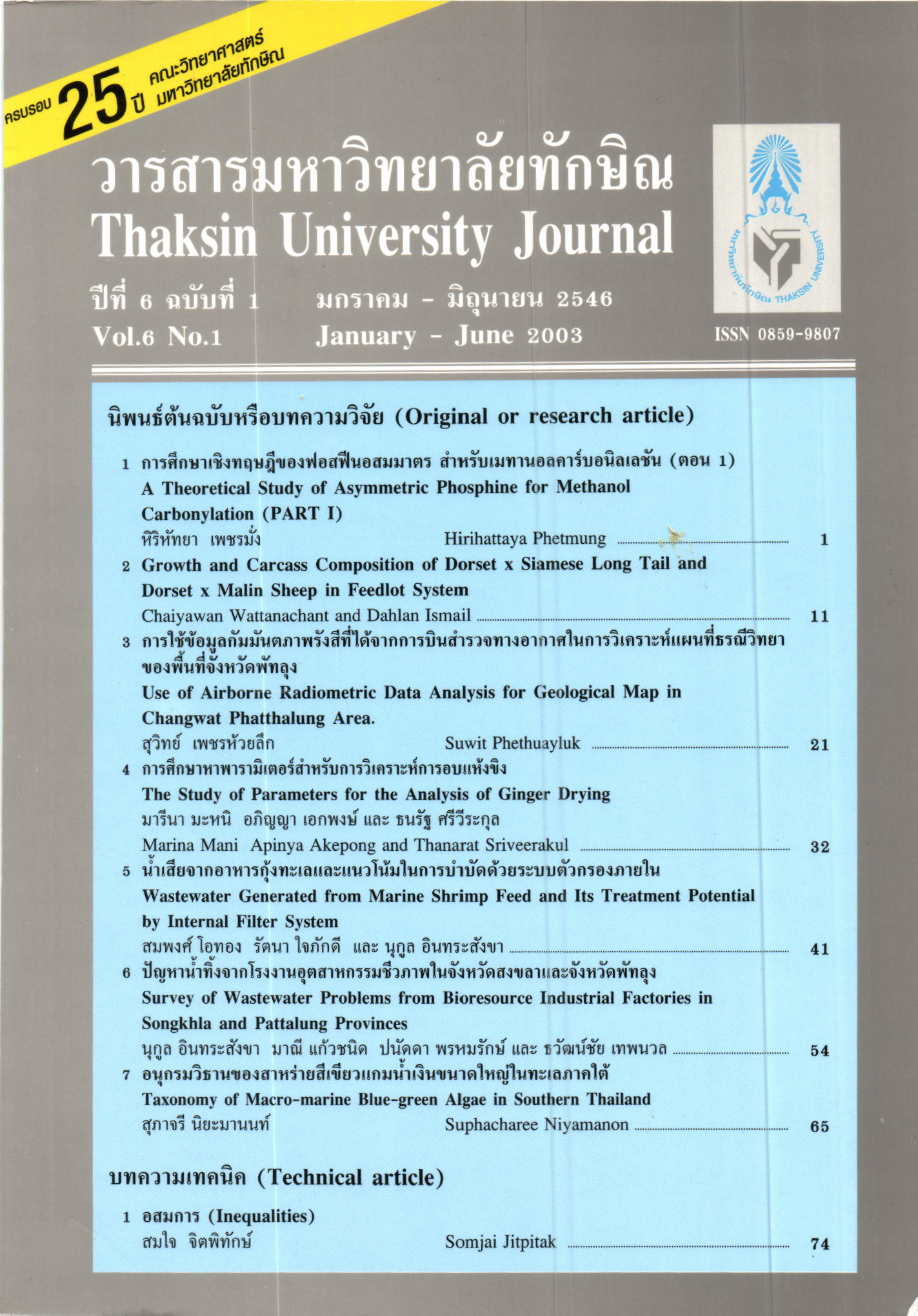น้ำเสียจากอากหารกุ้งทะเลและแนวโน้มในการบำบัดด้วยระบบตัวกรองภายใน
Main Article Content
Abstract
Shrimp farmers'high productivity expectation has lead to high stocking intensity and feeding approaches. The overfeeding becomes a significant source of the remaining organic matter in the pond both in soluble and insoluble forms. The aims of this report were to study the effects of shrimp feed on the quality of two types of wastewater, i.e., high salinity (2% NaCl) and low salinity (o.b% NaCl) wastewaters under aerobic and anaerobic conditions and its reatment potential by intemal filter system, which is commonly used in the fish tank. The results showed thar the shdmp feed solution (1.b g/1.) generated high concentrations of NH,'-N, sCOD, PO.'-P and SS. It was found that shrimp feed solution under anaerobic condition provided higher NH{'-N concentrations than under aerobic condition. Under aerobic condition, NH,'-N was oxidized to NO,--N and NO"'-N by nitrifying bacteria. In high salinity condition (z.o% NaCl), it was found that shrimp feed was changed slowly, the insoluble organic carbon and nitrogen conyerted to soluble forms when determined chemically. Shrimp feed solution under aerobic condition revealed the average water qualities of NH,'-N, NO,--N, NO.'-N, sCOD and POn' -p were a.lz t o.os, o.oa t o.zr, a.oa t r.ss, sss t ss and s.zs ! o.zz mgzl, respectively, and under anaerobic condition revealed the average of NH .-N,NO, -N, NO, -N, sCOD and PO,'-P werc 14.72 i a.zl, o.os t o.oos, o.zo I o.os, zas t uo and s.os t 0.68 mg./l, respectively. In low salinity condition (o.s% NaCl), shrimP feed solution was changed rapidly. Under the aerobic condition, the average water qualities of NH.'-N' NO" -N, NO. N, sCOD and PO,'' P were 11.25 t z.so, o.es t o.oo, z.s+ f r.zz, rrss t r:z and 2.28 !. o.b1 mg/I, respectively, and under anaerobic condition were 14.62 1 3.14, o.o4 1 0.003' o-zt ! o.oz, 1142 ! fi1 and n.oo t 0.06 mg/1, respectively. The preliminary results of wastewater treatment system using intemal filter system showed the removal of turbidity, suspended solids (SS) and total phosphate (TP) were achieved and differed significantly compared to the control (P ' 0.05). However, there were no sign of the removal of NH.' N, sCOD and PO.' -P.
Article Details
Section
Research Articles


